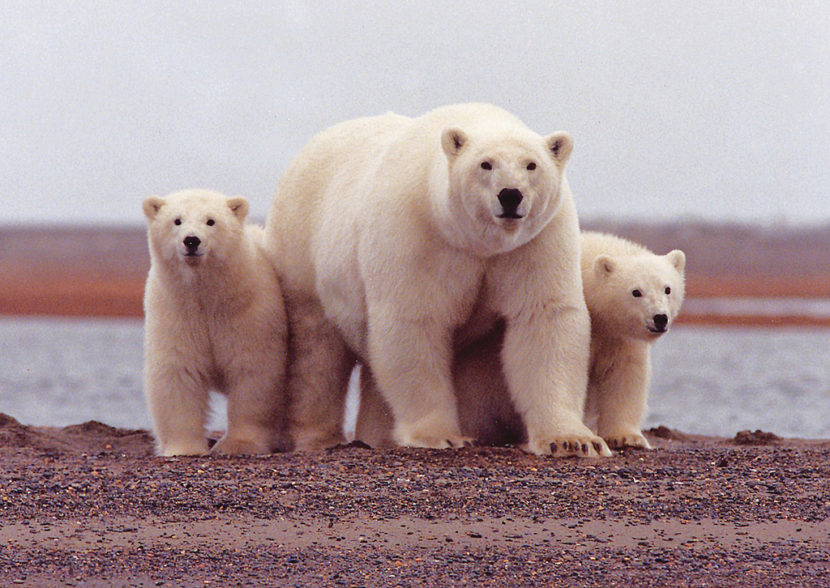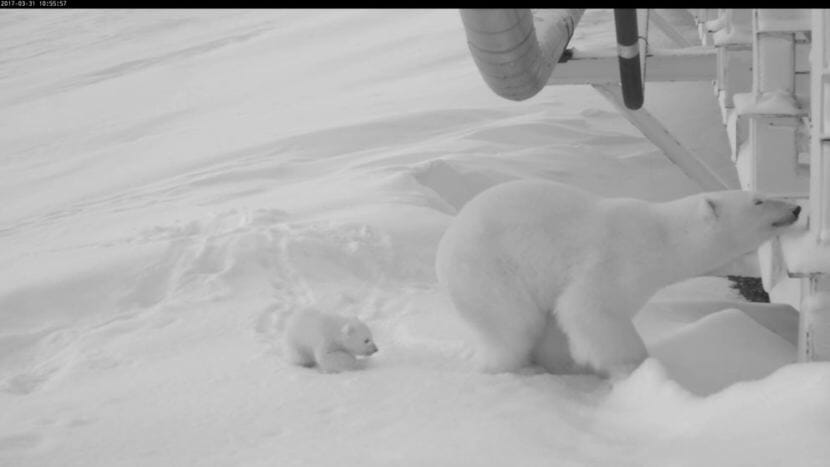
When the Arctic National Wildlife Refuge (ANWR) opens up to drilling, this largely untouched land could have new visitors as oil and gas exploration gets underway.
So, what does that mean for the animals who already live there? A new federal report doesn’t answer that question. But it does provide some context for what to expect.
When Congress passed the Republican tax overhaul bill in late December, Todd Atwood didn’t realize opening ANWR was part of the package deal.
He’s a polar bear biologist with the United States Geological Survey. And while he says the speed of the decision was unexpected:
“You know, from a science perspective, we’re not caught off guard by this.” Atwood said. “This is stuff we’ve been thinking about for a while.”
By “stuff,” Atwood is referring to the place where humans and polar bears meet.
Polar bears are listed as threatened under the Endangered Species Act.
Atwood says, historically, Beaufort Sea bears would den in the winter on ice. That was the case 15 years ago when his agency put together a report on animals living in ANWR. But an update to that report suggests that larger numbers of polar bears are denning on land.
Also, the bears are coming ashore to scavenge for food, as the quality of sea ice diminishes.
Atwood says it’s like two worlds more frequently coming together.
“People and polar bears in the same place and then a big pile of tasty bow head whale scraps to attract the bears and keep them focused on that area,” Atwood said.
Now, add to that the industrial activity one could expect in a newly opened ANWR. Roads would have to be built, and down the line, platforms for oil rigs.
Atwood says there are some uncertainties.
“How many people are we going to have sharing space with how many bears that doesn’t shake out in a way that bears aren’t at risk and people aren’t at risk?” Atwood said.
He says the concern is that polar bears could be driven from their den earlier than normal from all the racket — especially during a build up phase.
But Atwood says wildlife biologists aren’t completely in the dark with how it could play out.
The far north has experienced something like this before.
“The Prudhoe Bay industrial footprint,” he said. “They’ve been sharing space with polar bears for decades now.”
Once the infrastructure is built, Atwood says there are ways to mitigate harm. Oil companies have to comply with federal guidelines and report polar bears denning nearby. Infrared technology has been used to make that detection easier.

Last year, Hilcorp shut down a road for a few weeks, as a mother bear emerged from a den with her cubs.
But polar bears aren’t the only iconic animal to use the national wildlife refuge. The Porcupine caribou herd migrates through and their calves are born in the refuge in the summer months.
While oil production is still a ways off, Todd Atwood says the more we can learn in the interim about the wildlife, the better.
“My attitude is science can only help us in understanding what’s likely to happen,” he said.
He says an abundance of research is how you make management interventions — if the time comes.
Atwood is going into the field with his team this spring to study denning polar bears and cubs.
